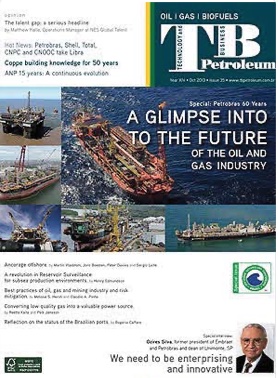
As children most of us heard the adage, “what is good for the goose is good for the gander” or some variation thereof. As adults, we continue to adhere to this simplistic code of conduct to guide our interactions. And, as business operators, we are increasingly aware that public ‘wins’ for one company can be shared across the sector – for the purposes of this discussion, our sectoral focus is on extractives. Conversely, negative brand recognition resulting from an environmental, social, or ethical transgression or incident experienced by one enterprise can collectively tarnish the industry as a whole, resulting in reduced shareholder confidence, loss of talented human capital, labor strikes, increased public scrutiny, and even possible public protests.
Recent mine collapses, oil spills, explosions, contaminations, and foreign corrupt practices have placed the extractives industry under global scrutiny; the often unregulated and decentralized operations governing natural resources exploration are, however, changing. Unlike the geological time scale required to form our most coveted and precious commodities, strategic, operational, and reputational change must take place more rapidly. This then begs the question, is the sector changing fast enough to meet today’s and tomorrow’s expectations?
Rapid, ad hoc change for the sake of public appearance alone is not likely to net sustainable and profitable outcomes. Cultivating an agile and adaptive risk mitigation narrative to ebb and flow with an enterprise’s business decisions must be strategic, not merely relegated to corporate social responsibility or sustainability reports at the end of the year. Investing in stewardship is a means to profitability.
Brazil has been actively involved in paving the path forward with respect to enhancing stewardship of the environment and natural resources management as well as social governance: State-owned, public-private ventures, privately held companies, trade associations, academia, and NGOs and civil society are increasingly engaged at various stages of adopting and/or promulgating various degrees of integrated, multi-stakeholder commitments, e.g., the Rio Declaration; the United Nations Global Compact (UNGC); International Standards Organization (ISO) mining & minerals and energy certification and management systems standards; the International Council of Mining & Minerals (ICCM); and Fundação Dom Cabral’s efforts on addressing the Mining Industry of the Future. Voluntary adoption of best practices and available certifications is only one part of mitigating the multi-dimensional risk inherent to the extractives industry. A more strategic approach, however, is warranted.
Identifying, preventing, and mitigating natural hazards and human-induced hazards (negligence, accidents, and deliberate sabotage) does not always get translated into a wider, strategic approach to enterprise risk management. Managing moral hazards are increasingly moving from public reproach to more formal means of enforceable regulation. Punitive damages punish criminal acts (including negligence, fraud, etc.) and are intended to deter and disincentivise existing and potential transgressors. Even if a defendant is not found culpable, linking a person and/or organization with criminal allegations can result in reputational loss and in some cases shareholder losses. In other cases, governments or unscrupulous business operators engage in corruption, thus paying off enforcers to look the other way or merely pay the fine and move on to business as usual. Shifting from a purely punitive system of regulation to one that creates incentives to not only comply with best practices but also promotes inducements such as tax relief, reduced insurance rates, and special financing lines is something to consider. There is a need to discuss how we can engage in “prevention regulation” and open up the extractives industry to third-assurance.
Brazil, like many emerging economies, has a demographic advantage; investing in this commodity is equally important as investing in the extraction and exportation of the commodities for which Brazil heavily relies. The nation branding benefits of introducing enterprise risk management into human capital training in the extractives industry are easy to envision.
Enterprise risk management is far more agile than merely transfering risk or finding alternative risk financing vehicles. That being said, there is no need to reinvent the wheel. While each extractive enterprise, be it state, private, or jointly-run ought to adopt risk mitigation strategies and operational processes, there is a benefit to herd behaviour and collective security arrangements.
And thus, we return to the goose and the gander. Creating a risk and liability sharing partnership or pooling agreement is not a new concept. Protection & Indemnity (P&I) Clubs have been collectively protecting competing shipowners for over a century. It will be up to Brazilian authorities to decide if it is in their inerest to create such a collective security arrangement for their critical resources or if they will share the burden of responsibiliy and the profitability with the private sector. The most seemingly natural fit for this role could be the Federal Court of Accounts of Brazil (TCU) and International Cooperation.
In many areas of natural resources exploration Brazil leads the world. With three rounds of oil and gas exploration this year (onshore and offshore, conventional and unconventional gas, and pre-salt areas), and with a new bill regarding mining exploration, it’s time to think about how the government can share the burden of mitigating and recovering from incidents related to natural resources exploration and energy production with private sector operators. Private and public sector investment in risk prevention make sense.
Best case scenario is that there is a matching, if not more robust, private sector resilience and emergency preparedness and response safety net. The government alone should not be left to shoulder this burden. Voluntary compliance and adherence to industry best practices and organizations do not take the place of legislation. It’s time to act.
(*) Artigo escrito junto com Melissa S. Hersh




